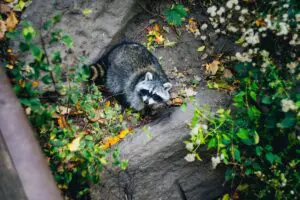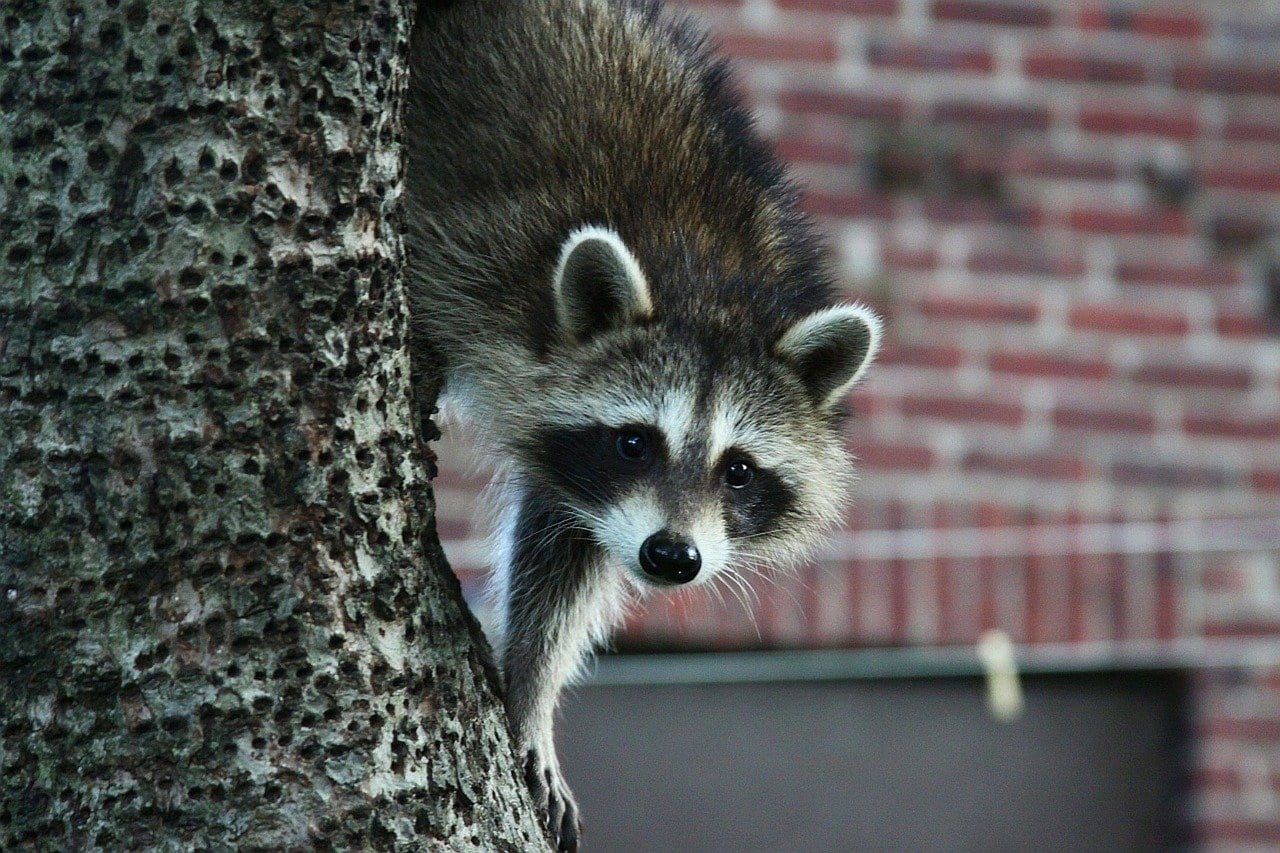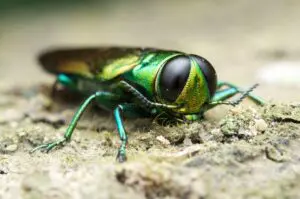

Raccoons: A Guide for Identifying and Preventing the Masked Pests
Although some people think raccoons are cute, they may quickly change their minds after a raccoon moves onto their property. The “bandit masks” that raccoons sport are a perfect accessory, because they are quite the little trouble makers. Between the damage they cause and the illnesses they spread, raccoons are not guests you want on your property, so we created a guide for identifying and preventing these uninvited visitors.
Raccoon Identification:
Raccoons are roughly 2 to 3 feet long with roundish, stocky bodies, and they have gray, salt and pepper-like fur all over. Their tails are very furry with black rings around them. Raccoons are known for the distinctive “mask” of black fur around their eyes which some refer to as a “bandit mask.” They use their small paws to root through trash, climb walls and fences, catch prey, and eat their food.
Raccoons can be found throughout the United States, but they are most commonly spotted in eastern parts of the country. This is because they prefer to live in wooded areas with easy access to a water source. They prefer to make their dens in brush piles, barns and abandoned buildings, dense clusters of cattail, abandoned ground burrows and muskrat houses, hollow trees, haystacks, and rock crevices. However, they have also been known to move into homes, making dens in places like attics, chimneys, crawlspaces, and the areas below porches.
Raccoons are omnivores, so they will eat both meat and plants. This means that they are not too picky about their meals, and any sort of food source will attract them. They are partial to berries, fruits, and nuts, as well as crayfish, bird eggs, fish, frogs, insects, muskrats, mussels, rabbits, and turtles.
Raccoons are not typically seen during the day because they are nocturnal creatures. Because they tend to hunt and feed during the night, it can be hard to catch them in the act. They do leave behind evidence of their activity, though. Tracks and droppings are of course the main things to look for, but they can also leave behind noticeable damage. They will tip over things like trash cans, pet food containers, and bird feeders, and they will rifle through compost piles, gardens, and fish ponds. They are also quite noisy while wreaking havoc, so they often give themselves away even before leaving behind any evidence of their visit. In addition to the property damage and undesirable noise they cause, raccoons are rather dangerous pests to have around, and should be dealt with right away.
Raccoon Dangers:
As previously mentioned, raccoons can cause extensive damage. Apart from damage, though, raccoons are major carriers of diseases, the most well-known of which being rabies. Rabies in raccoons is especially prominent in the eastern part of the U.S. where their populations are rising. Although daytime activity is sometimes an indicator of rabies, there are other reasons for raccoons to venture out during the day. Some clearer indicators that a raccoon has rabies are difficulty walking or leg paralysis, confusion and disorientation, wet and tangled fur, notable aggression, loud and unusual noises, and sometimes foaming at the mouth and watery eyes.
While raccoons are one of the most common carriers of rabies, rabies is not the most common raccoon-borne disease. In fact, the most common is canine distemper. Symptoms of canine distemper in raccoons are quite similar to the symptoms of rabies. The most noticeable physical symptom of distemper that differs from rabies symptoms is runny nose and conjunctivitis. Other raccoon-borne diseases include infectious canine hepatitis, leptospirosis, pseudorabies, and parvoviral enteritis.
Besides diseases, raccoons are also prominent carriers of parasites. For instance, raccoon ringworm, which causes Baylisascaris infection. Raccoons also carry fleas and ticks, which can spread a host of diseases themselves.
Raccoon Pest Control Pro Tips:
The best way to deal with raccoons is to hinder their arrival in the first place. Here are some tips for effectively preventing raccoon intruders.
Don’t feed them
Raccoons look for places that have both a safe place to build a den and a consistent food source. When raccoons find a consistent food source, they will keep returning and they will start to bring friends. Do not purposely leave food out for raccoons, and try to raccoon-proof your property. Make sure all of your outdoor garbage cans, compost containers, and pet food containers have tightly sealed lids, and do not leave pet food out overnight. Regularly clean up fallen fruit and birdseed. Lock any chicken coops and outdoor rabbit cages overnight, and put a fence around any fish ponds. Add a single strand of electrified wire to the fence to make it unclimbable. Fences can also be put up around newly-laid sod to prevent raccoons from rolling it back in search of grubs and insects.
Remove den sites
After eliminating all food sources, it is important to eliminate any potential den sites. The best way to do this is to thoroughly clean up your yard. First, trim any overgrown shrubs and tree branches. Remove brush and debris piles from your yard, and move firewood piles at least 20 feet away from the outside of your home or business.
Eliminate pathways
The most important step in keeping raccoons outside is eliminating any entry points. Seal any holes in the roof and outer walls of all buildings, including main buildings, garages, and sheds. Make sure all vents have covers. Raccoons can use branches as pathways to enter attics, so make sure any branches are at least 5 feet from the outside of your home or business. Consider doing away with trellises and arbors, as raccoons can climb them to reach your roof. Raccoons love chimneys, so seal your chimney with a spark arrester or chimney cap to prevent the pests from climbing in. Make sure there are no critters already living in your chimney before sealing it, though, or you’ll be in for quite an unpleasant smell pretty soon. Close off open areas such as those under decks, porches, and sheds. To do this, use a 10-gauge ¼ or 1/3 inch galvanized hardware mesh. Bury the mesh at least 6 inches deep and extend it outward 12 feet so the raccoons cannot dig their way underneath it.
Scare them away
Raccoons are skittish pests, so they will run away as soon as they are startled. If they are scared badly enough, they will stay away for at least a few days, and that’s if they come back at all. Hitting a metal pan with a wooden spoon or blasting a radio near their favorite spot should cause enough ruckus to get the job done.
Call an expert
Raccoons are not pests that you should interact with in any way. Not only do they spread diseases and parasites, they can become extremely aggressive, especially when trapped. You should not set your own traps, as they may kill an unintended target like a pet. If you are having issues with raccoons on your property, it is best to call an expert right away.
As funny as their little masks look, there is nothing funny about raccoons in homes and businesses. Raccoons are not a pest that should be taken lightly and it is best to have them dealt with as soon as possible. If you have one or more raccoons on your property, call Excel today and we’ll get rid of them for you.






